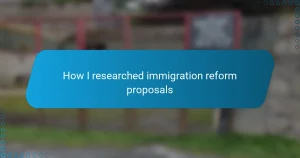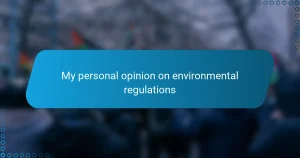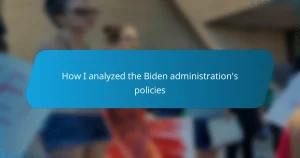Key takeaways
- Advocacy groups play a crucial role in amplifying marginalized voices and influencing political change through education and mobilization.
- Setting clear collaboration goals is essential for effective teamwork, requiring flexibility and a shared vision to navigate challenges.
- Effective communication, including active listening and relatable messaging, enhances trust and fosters better collaboration outcomes.
- Personal engagement with advocacy groups leads to deeper emotional connections, expanded networks, and a more optimistic view of political involvement.

Understanding advocacy groups roles
Advocacy groups, in my experience, act as the voice for those who might otherwise go unheard in the vast and often overwhelming arena of politics. They don’t just lobby or protest—they educate, mobilize, and bring urgent issues to the public’s attention in ways that feel deeply human. Have you ever wondered how some causes suddenly gain momentum? It’s often these groups working tirelessly behind the scenes.
What struck me most during my collaborations was how varied these groups are in their approaches and goals. Some rely on policy expertise, others on grassroots mobilization, but all share a passion that feels contagious. I remember attending a meeting where the energy in the room made me realize advocacy wasn’t just about pushing ideas, but about sparking hope and demanding change.
It’s easy to underestimate their influence, but advocacy groups hold a surprising amount of power in shaping debates and even legislation. Understanding their role helps me appreciate how democracy really functions—not just through elections, but through continuous, collective effort by committed individuals and organizations. Doesn’t that make you see political engagement in a different light?
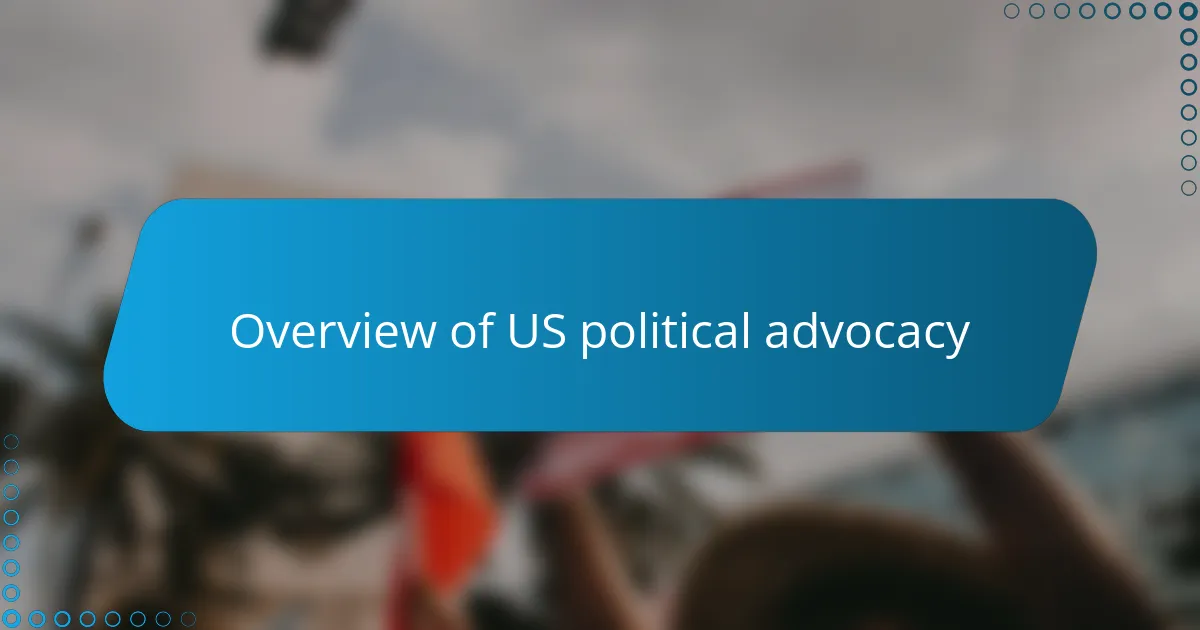
Overview of US political advocacy
The landscape of US political advocacy is incredibly diverse, encompassing everything from well-funded national organizations to small, passionate local groups. I’ve noticed that each operates on a spectrum of strategies—from direct lobbying of lawmakers to empowering everyday citizens to speak up. Have you ever paused to think about how these tactics come together to shape policies that affect millions?
What truly fascinates me is how advocacy efforts can shift swiftly in response to current events. I recall a time when a sudden policy change threatened vulnerable communities, and the immediate mobilization by advocacy groups was nothing short of inspiring. It’s in those moments that you see the real pulse of American democracy—people demanding their voices matter right here, right now.
Yet, despite their importance, these groups often face criticism or misunderstanding. Many see them as just another political force, but through my experience, I’ve come to view them as vital connectors between the government and the public. Don’t you find it interesting how much of our political landscape rests on this continuous push and pull driven by dedicated advocates?
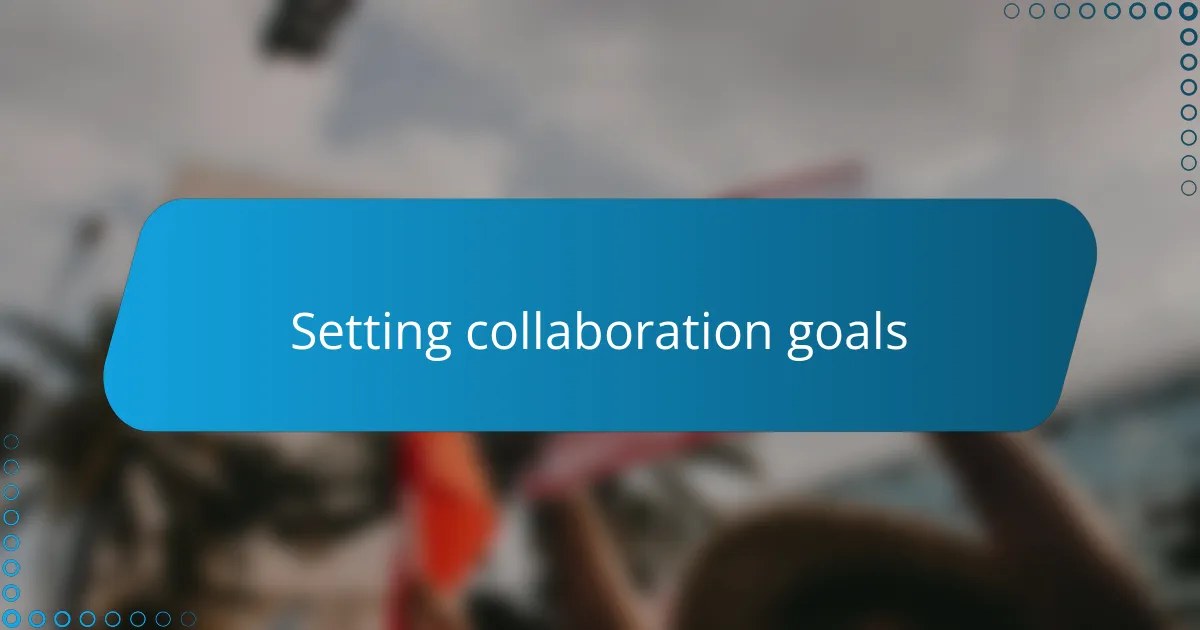
Setting collaboration goals
Setting clear collaboration goals felt like the first essential step in making our joint efforts purposeful rather than just busywork. I remember sitting with one group, realizing quickly that without a shared vision, our meetings would drift without direction. Have you ever been part of a project where everyone talks but nothing really moves forward? That’s exactly what we wanted to avoid.
Defining what success looked like—for both the advocacy group and myself—helped me stay focused and intentionally contribute. Sometimes the goals were as concrete as influencing a specific piece of legislation, while other times they were more about raising awareness on an emotional level. This mix made me appreciate the need for both measurable outcomes and the softer victories that keep momentum alive.
I also found it important to revisit and adjust those goals as circumstances changed. Advocacy work is fluid, and what felt urgent one month could shift entirely the next. Have you ever had to pivot plans because new information or challenges surfaced? Embracing that flexibility was crucial in maintaining trust and impact throughout our collaboration.
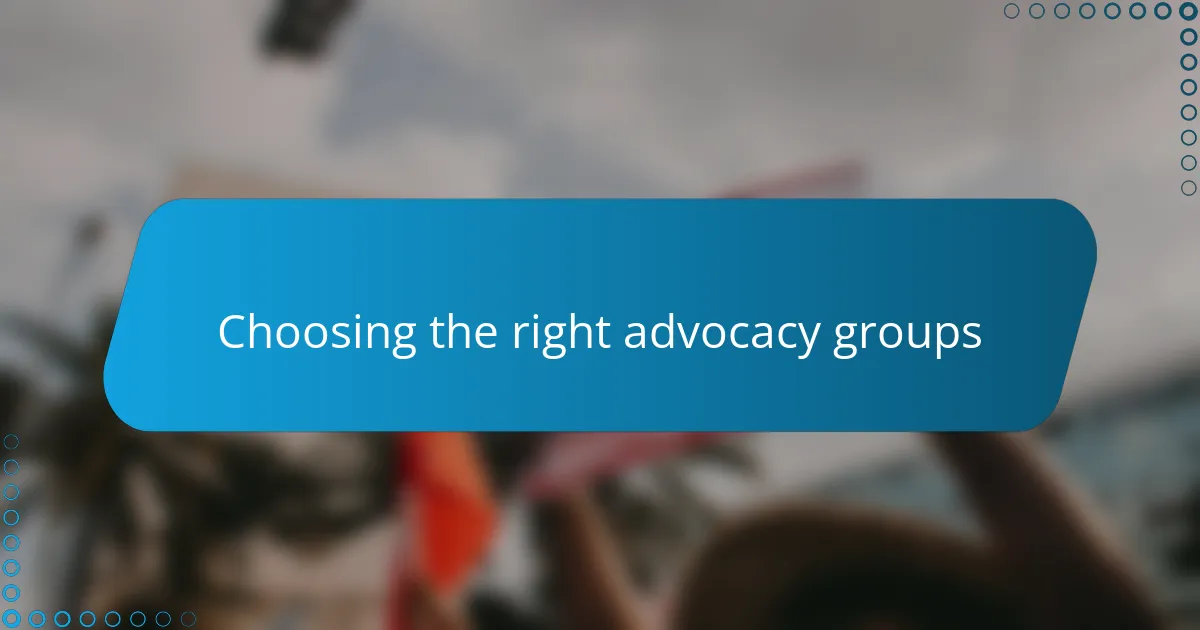
Choosing the right advocacy groups
Choosing the right advocacy groups requires more than just aligning on policy issues—it’s about connecting with people whose values resonate deeply with your own. I recall feeling a genuine spark during one initial meeting when their passion didn’t just seem scripted but heartfelt. Have you ever found yourself drawn to a cause because of the authentic energy behind it rather than just the facts?
I quickly learned that vetting these groups meant looking beyond their public statements to how they operate on the ground. Do they listen to diverse voices? Are they transparent about their goals and methods? Observing these qualities helped me decide where my time and resources would truly make a difference.
Sometimes, the choice comes down to trusting your gut about whether the group’s culture fits your working style. I remember stepping back from a partnership because the approach felt too rigid or overly confrontational for my taste. In advocacy, compatibility can fuel sustained enthusiasm or quietly drain it, don’t you think?
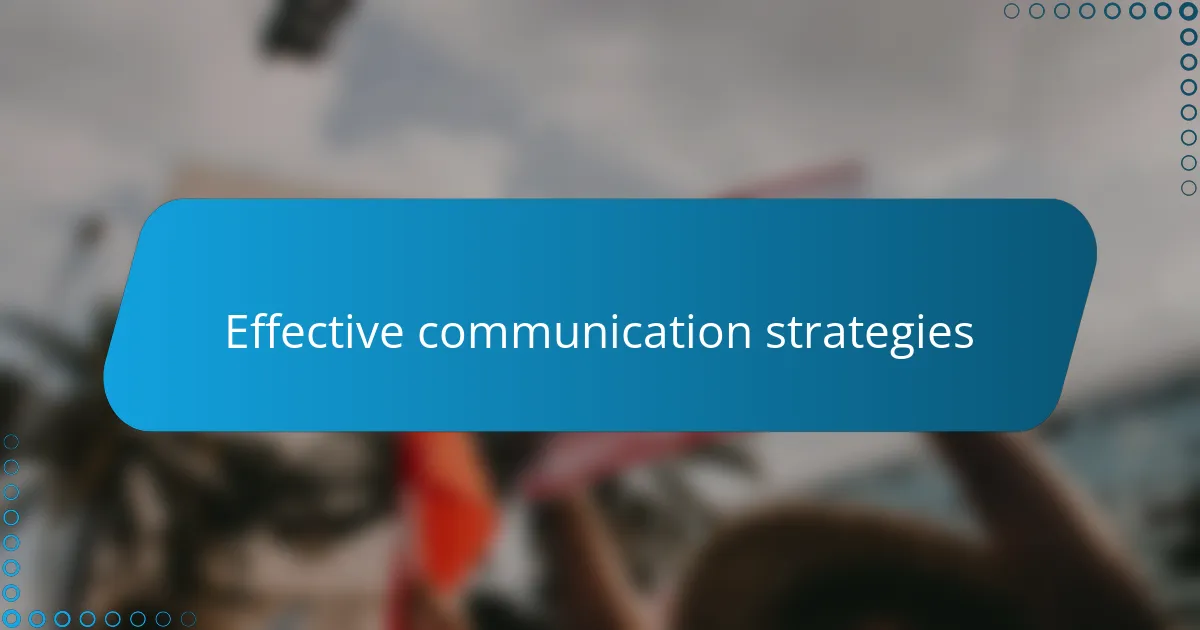
Effective communication strategies
One strategy that really stood out to me was the power of active listening. When I took the time to genuinely hear what advocacy group members were saying—not just their words but their emotions and concerns—it built a foundation of trust that felt indispensable. Have you noticed how much smoother conversations go when people feel truly understood?
Another effective approach was tailoring the message to the audience. I recall one instance where a group helped me reframe complex policy jargon into clear, relatable stories that resonated with everyday citizens. That shift made advocacy feel less like a lecture and more like a shared experience. Isn’t it amazing how communication transforms when it connects on a personal level?
Lastly, consistency mattered more than I expected. Keeping regular updates and being transparent about challenges helped maintain momentum and morale. I’ve seen how this ongoing dialogue prevents misunderstandings and keeps everyone aligned. Have you ever been part of a team where communication dropped off and things quickly unraveled? That experience showed me why steady outreach can be a game changer.
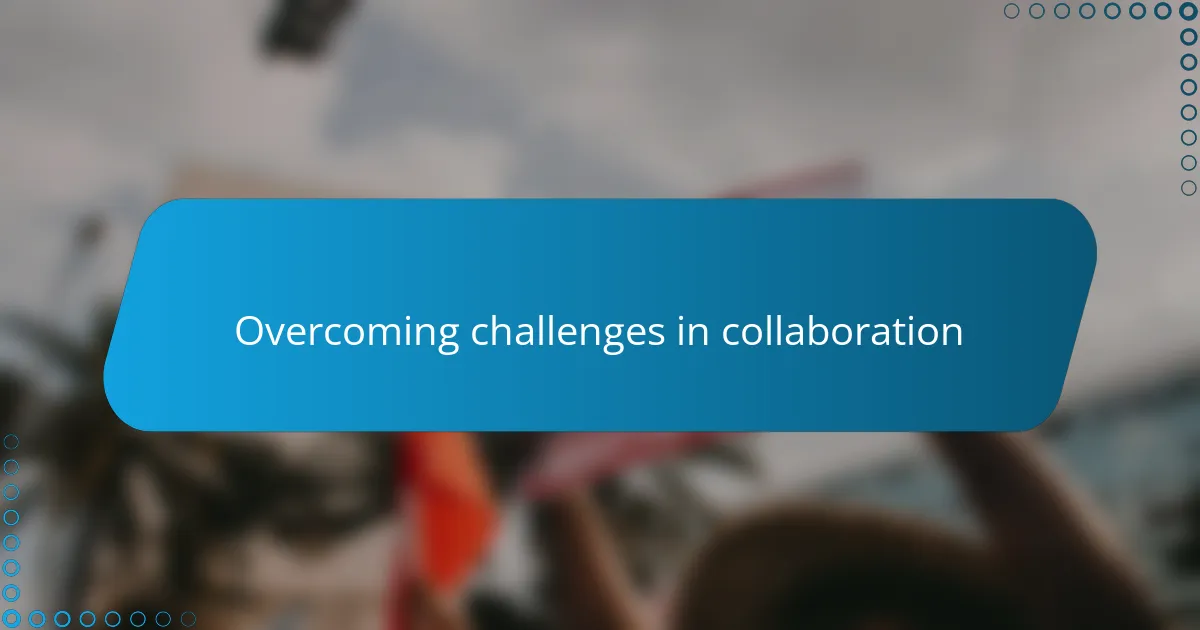
Overcoming challenges in collaboration
Navigating differences in priorities was one of the trickiest parts of collaborating with advocacy groups. I remember a moment when passion ran high, and we hit a wall because we weren’t fully aligned on what needed urgent attention. Have you ever been in a situation where everyone talks about change but disagrees on the details? Learning to listen closely and find common ground helped me move past those roadblocks.
Another challenge was managing expectations, especially when progress felt slow or setbacks appeared. It was frustrating at times—not going to lie—but I realized that patience and celebrating small wins kept the energy alive. When one group celebrated even a modest policy shift as a victory, their optimism reminded me that advocacy is a marathon, not a sprint. Doesn’t it make you think about how persistence plays quietly behind the scenes of big changes?
Communication mishaps also crept in, despite our best intentions. At one point, a simple misunderstanding led to duplicated efforts and some tension. From that experience, I learned the value of checking in frequently and being explicit about roles and deadlines. Have you experienced moments where a quick clarification could’ve saved hours of confusion? That taught me collaboration thrives on clarity as much as on shared passion.
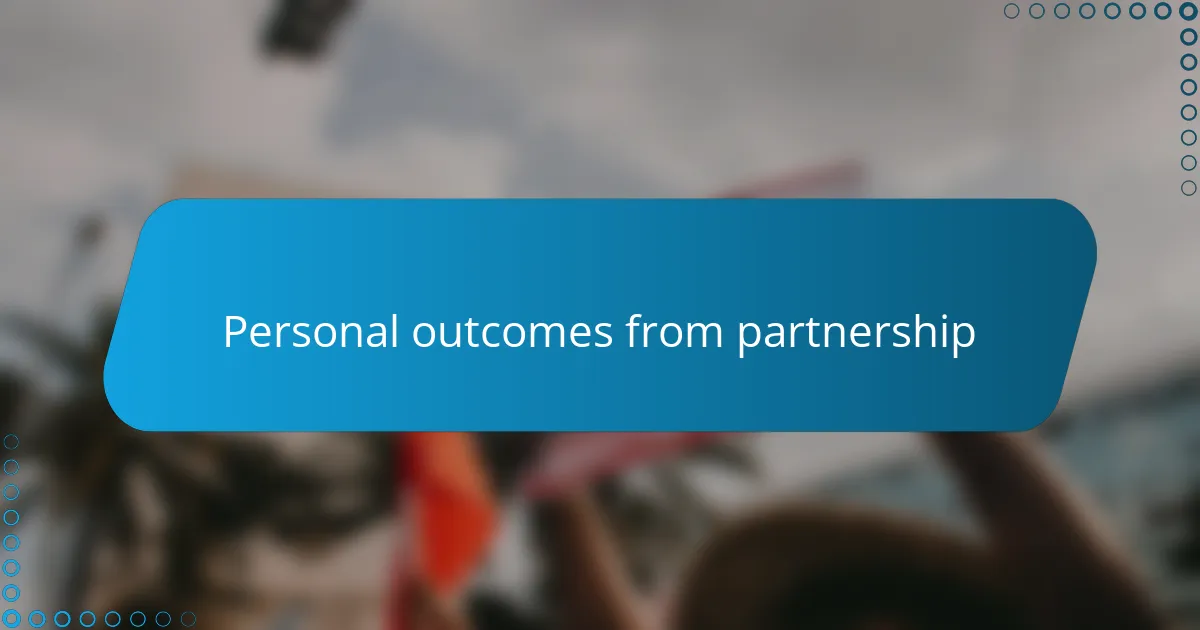
Personal outcomes from partnership
Partnering with advocacy groups reshaped my understanding of impact on a personal level. I never expected how deeply I would feel connected to the causes—not just intellectually but emotionally. Have you ever worked alongside a group where their dedication sparks a profound sense of purpose? That sense stayed with me long after meetings ended.
One surprising outcome was how the collaboration expanded my own network and skills. I gained insights into grassroots organizing and policy nuances that textbooks never covered, simply by immersing myself in real-world action. At times, it felt challenging to keep pace, yet those moments pushed me to grow in ways I hadn’t anticipated.
Most rewarding, though, was the subtle shift in my attitude toward political engagement. Witnessing firsthand the persistence and hope embedded in advocacy efforts made me more patient and optimistic about change. Do you think that kind of perspective can only come from observation? In my experience, active collaboration is what truly transforms understanding into belief.
